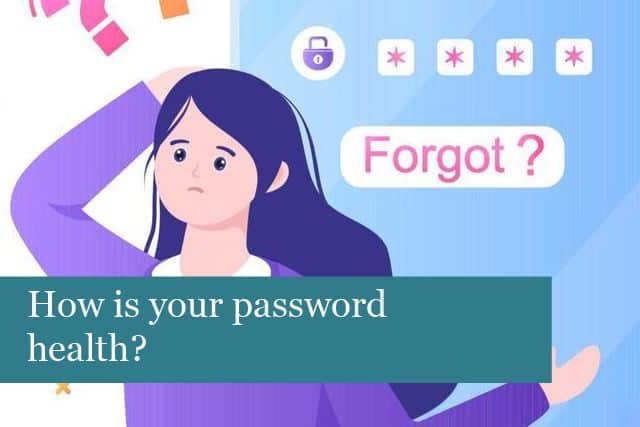
Our personal and professional lives are increasingly intertwined with online platforms, password security has never been more critical. Passwords are the first line of defence against unauthorised access to our sensitive information, ranging from personal emails and social media accounts to online banking and confidential work files.
The consequences of weak or compromised passwords can be severe, including identity theft, financial loss, and significant privacy breaches.
As cyber threats become more sophisticated, understanding and implementing strong password security practices is essential to protect our digital identities and maintain the integrity of our online activities.
Consequences of Weak Passwords
Weak passwords can lead to severe consequences, including unauthorised access to personal accounts, data breaches, identity theft, and significant financial losses. Understanding the importance of strong passwords is the first step in enhancing your digital security.
Understanding Password Health
Definition of Password Health
Password health refers to the overall strength and security of your passwords. It encompasses factors such as complexity, uniqueness, and resistance to hacking attempts.
Components of a Strong Password
A strong password typically includes a mix of uppercase and lowercase letters, numbers, and special characters. It should be long enough to deter brute force attacks and avoid using easily guessable information such as birthdays or common words.
Common Password Weaknesses
Reusing Passwords
Using the same password across multiple accounts is a significant security risk. If one account is compromised, all other accounts using the same password are also at risk.
Simple and Predictable Passwords
Passwords like “123456” or “password” are extremely vulnerable to attacks. Cybercriminals often use common passwords as part of their hacking strategies.
Lack of Complexity
Passwords lacking complexity are easier for attackers to guess or crack using automated tools. Incorporating diverse character types enhances password strength.
Risks Associated with Weak Passwords
Data Breaches
Weak passwords can lead to data breaches, exposing personal and sensitive information to unauthorised parties. Data breaches can have long-lasting repercussions for individuals and organisations.
Identity Theft
Cybercriminals can use compromised passwords to steal identities, opening fraudulent accounts, and conducting illegal activities in the victim’s name.
Financial Losses
Weak passwords can result in financial losses through unauthorised transactions, fraudulent purchases, and compromised banking information.
Evaluating Your Current Password Health
Tools and Techniques for Assessment
Several tools are available to assess password health, such as password strength meters and security audits. These tools help identify weak passwords and suggest improvements.
Common Indicators of Weak Passwords
Indicators of weak passwords include reuse across multiple sites, use of common words or patterns, and lack of special characters or length.
Creating Strong Passwords
Best Practices for Password Creation
To create strong passwords, follow these guidelines:
- Use a combination of uppercase and lowercase letters, numbers, and special characters.
- Avoid using easily guessable information.
- Make passwords at least 12 characters long.
Examples of Strong Passwords
Examples of strong passwords include:
- hT7#dL*3k!9z
- Xy$8v#7Lt2@p
- B^r5M!w0Qx*3
Password Management Tools
Benefits of Using Password Managers
Password managers store and generate strong, unique passwords for each of your accounts, reducing the risk of password-related security breaches.
Popular Password Management Tools
Some popular password management tools include:
- LastPass
- 1Password
- Dashlane
- Bitwarden
Two-Factor Authentication (2FA)
Importance of 2FA
Two-factor authentication adds an extra layer of security by requiring a second form of verification, such as a code sent to your phone, in addition to your password.
How to Set Up 2FA
To set up 2FA:
- Enable 2FA in your account settings.
- Choose a second factor, such as SMS, authenticator app, or biometric verification.
- Follow the prompts to complete the setup process.
Password Recovery and Resetting
Secure Password Recovery Methods
When recovering or resetting passwords, use secure methods such as verified email addresses or security questions that are not easily guessable.
Tips for Safe Password Resets
Ensure you reset passwords using secure devices and networks. Avoid resetting passwords on public Wi-Fi or shared computers.
Future of Password Security
Emerging Trends in Password Security
Emerging trends include biometric authentication, password-less authentication methods, and advanced AI-driven security solutions.
Potential Alternatives to Passwords
Potential alternatives to passwords include fingerprint scans, facial recognition, and other biometric identifiers, which offer enhanced security and convenience.
Password health is essential in protecting personal and sensitive information online. Implementing strong passwords, using password management tools, and enabling two-factor authentication are essential steps in maintaining robust security.
We can help you take immediate steps to protect your online health. Contact us today.
Recommended Posts

How to Get the Most Out of Your IT Budget
25th April 2025

10 Biggest Cybersecurity Mistakes of Small Companies
18th April 2025

The Importance of Planning in Business IT Solutions
11th April 2025
